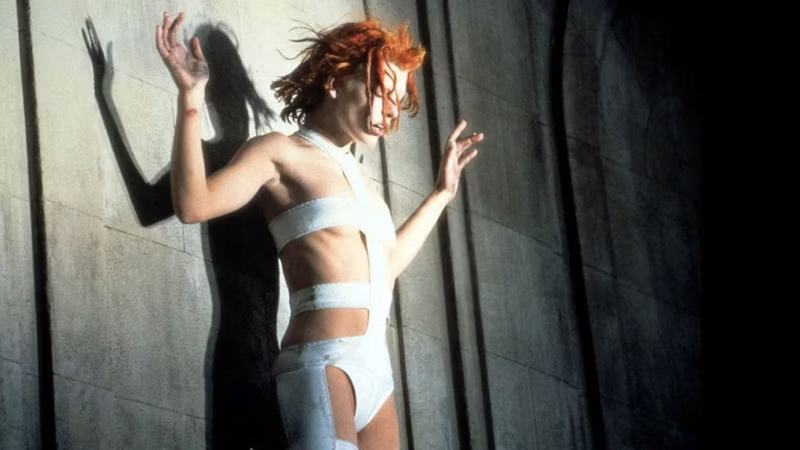A Comprehensive Beginner’s Guide to the Genre
Welcome to Flikbak TV, your ultimate destination for all things retro, nostalgic, and cult classics! In this blog post, Unlocking Cyberpunk, we’re embarking on an exhilarating journey to unravel the mysteries of cyberpunk cinema. From its humble beginnings to its enduring legacy, join us as we explore the essence of cyberpunk and its profound impact on the world of film.

1. Origins of Cyberpunk
Inception of Cyberpunk:
Cyberpunk, a genre known for its gritty urban settings, advanced technology, and dystopian futures, originated in the 1980s. Stemming from the works of visionary authors like William Gibson, Bruce Sterling, and Philip K. Dick. Cyberpunk literature paved the way for a new wave of storytelling that captured the imaginations of readers around the world.
The Early Influencers:
William Gibson’s seminal novel “Neuromancer,” published in 1984, is often credited as the cornerstone of cyberpunk literature. Its groundbreaking depiction of cyberspace, hackers, and corporate espionage laid the foundation for the genre’s aesthetic and thematic elements. Influential works, such as Philip K. Dick’s “Do Androids Dream of Electric Sheep?” and Bruce Sterling’s “Mirrorshades” anthology, further solidified cyberpunk’s place in literary history.

2. Defining Characteristics
Dystopian Futures:
At the heart of cyberpunk lies a bleak vision of the future, where society has succumbed to chaos and decay. A dystopian world often characterized by rampant inequality, environmental degradation, and oppressive surveillance systems. In films like “Blade Runner” and “Ghost in the Shell,” viewers are transported to sprawling metropolises. Teeming with crime and corruption, where the line between man and machine blurs.
High-Tech, Low-Life:
One of the defining features of cyberpunk is its juxtaposition of high-tech advancements with low-life environments. In these worlds, futuristic technologies coexist with poverty, crime, and societal decay. It’s the bustling streets of Neo-Tokyo in “Akira” or the rain-soaked alleys of Los Angeles in “Blade Runner.” Cyberpunk settings immerse audiences in a gritty, urban landscape where danger lurks around every corner.

3. Visual Aesthetics
Neon-Soaked Cityscapes:
A hallmark of cyberpunk cinema is its striking visual style, characterized by neon-soaked cityscapes that pulse with life and energy. These vibrant metropolises, bathed in hues of blue, purple, and pink. Create a mesmerizing backdrop for the action-packed narratives unfolding within them. From the towering skyscrapers of “The Matrix” to the sprawling megacities of “Akira.” Cyberpunk cities are as much a character as the protagonists themselves.
Gritty Urban Landscapes:
We love their neon-lit exteriors, cyberpunk cities are often portrayed as gritty, dystopian landscapes rife with poverty and decay. Dilapidated buildings, crowded streets, and flickering neon signs paint a picture of a society on the brink of collapse. Directors use atmospheric lighting, intricate set design, and clever cinematography. To transport viewers to these immersive worlds, where danger lurks around every corner.

4. Key Themes
Corporate Dominance:
One of the central themes of cyberpunk is the omnipresent influence of powerful corporations on society. In these dystopian futures, mega-corporations wield immense power and control over every aspect of life, from politics to technology. Films like “RoboCop” and “The Fifth Element” explore the consequences of unchecked corporate greed. A world where profit trumps morality and humanity is reduced to a commodity.
Human-Machine Integration:
A recurring theme in cyberpunk cinema is the fusion of humanity and technology. Blurring the lines between man and machine. A cyborg enhancements, artificial intelligence, or virtual reality. Cyberpunk worlds are populated by characters who have embraced technology in all its forms. Films like “Ghost in the Shell” and “Upgrade” challenge viewers to question what it means to be human. In a world where technology has become inseparable from daily life.
5. Influences and Legacy
Cross-Media Influence:
The influence of cyberpunk extends far beyond the realm of cinema, permeating literature, video games, music, and more. From the cyberpunk novels of Neal Stephenson to the groundbreaking video game series “Deus Ex.” The genre has inspired countless creators to explore similar themes of technology, identity, and societal upheaval. The iconic imagery and themes of cyberpunk have become synonymous with the digital age, shaping our collective imagination for decades to come.

Cultural Impact:
The cultural impact of cyberpunk cannot be overstated, as it has left an indelible mark on popular culture around the world. From fashion trends influenced by films like “The Matrix” to the rise of cyberpunk-inspired music genres like synthwave and cyberpunk. The genre continues to captivate audiences and inspire new generations of creators. Its enduring legacy serves as a testament to the power of speculative fiction to provoke thought, inspire creativity, and challenge the status quo.
6. Evolution of Cyberpunk
Adapting to Modern Times:
As technology continues to evolve at a rapid pace, cyberpunk cinema has adapted to reflect contemporary concerns and anxieties. Recent films like “Blade Runner 2049” and “Alita: Battle Angel” explore themes of artificial intelligence, genetic engineering, and transhumanism. It pushes the boundaries of what it means to be human in an increasingly digitized world. With advances in CGI, virtual reality, and immersive storytelling techniques, the future of cyberpunk cinema is brighter than ever.

Future of the Genre:
Looking ahead, the future of cyberpunk cinema holds endless possibilities. As filmmakers continue to push the boundaries of storytelling and visual effects. From exploring the ethical implications of emerging technologies to envisioning new worlds beyond our wildest imagination, the genre remains a fertile ground for creativity and innovation. Audiences crave immersive experiences and thought-provoking narratives. Cyberpunk cinema is poised to thrive in the digital age and beyond.
Conclusion:
As we conclude our journey through the captivating world of cyberpunk cinema. We hope this comprehensive beginner’s guide has provided valuable insights into the genre’s origins, defining characteristics, and cultural significance. If you’re a seasoned cyberpunk enthusiast or a newcomer eager to explore this mesmerizing realm.
Flikbak TV invites you to embark on an unforgettable adventure through our curated collection of cult classics and cyberpunk films. Join us as we celebrate the magic of retro, nostalgic, and visionary cinema that continues to inspire and captivate audiences around the world.

